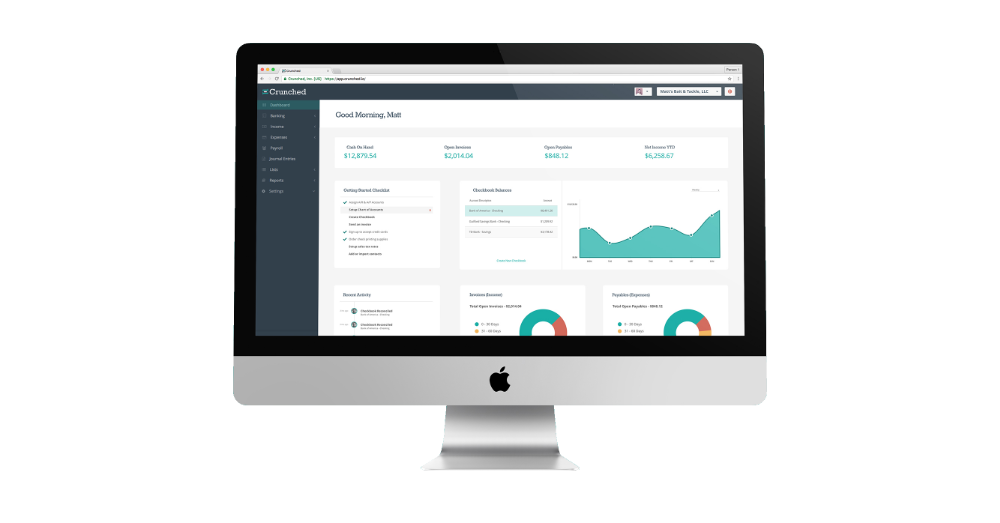Understanding The Basic Accounting Formulas
By Matt Reims
There are several moving parts to any small business. One of them is managing the company’s finances. This is one of those tasks that you can’t ignore without the risk of running into issues. Managing your accounting functions effectively will help avoid problems like running out money you thought you had, missing bill payments, or receiving tax penalties. Understanding the basic accounting formulas is a good first step in educating yourself on essential small business finances.
Because bookkeeping for your small business is so important, it may be worth considering bringing someone in to handle accounting functions for you. Hiring a part-time bookkeeper can allow you to focus on other aspects of your company. Whether you choose to operate with help or handle the finances yourself, there are a few basic accounting formulas you should know about. They’ll provide you with a detailed look at the financial position of your business at any given time.
Here are the basic accounting formulas you should know, regardless of the type of business that you own.
1) Accounting Equation
The accounting equation is simply assets equals liabilities plus owners equity (A=L+OE). Your assets include things like cash, inventory, and office equipment — basically anything your small business owns that could benefit it down the line.
Liabilities are any money that you owe others (debts, office space rent, etc.). The last part of the equation, equity, is how much of the company belongs to you (or others).
2) Breakeven Point
This accounting formula will show how much revenue is required to break even. Breakeven means that your business isn’t making any profit, but it isn’t losing money either. The breakeven point is determined by dividing your fixed costs (recurring costs needed to run the business) by your sales price, and subtracting that number by the variable cost per unit (how much it costs to make your product).
You can use this formula to see how much potential profit can be earned once the company breaks even. It’s also valuable in determining how profits could change if you were to alter the product price. And you can use it to determine how much of a loss to expect if there’s ever a decrease in sales.
3) Net Income
Net income is the accounting formula that shows how much money is left over after your small business pays all of its expenses. This is one of the easiest ways to determine a company’s financial well-being. Every company uses the same formula to determine net income: revenues minus expenses. The goal is for your net income to be a positive number because this will show that more money is going into your business than is going out of it.
4) Profit Margin
Profit margin displays how much of the company’s sales are left over once all expenses are paid. The accounting formula to determine your small business’s profit margin is your net income divided by sales.
The higher your profit margin, the more financially healthy your business is, most likely. Lower profit margins could mean your business isn’t doing well or expenses are being managed poorly. Profit margin numbers are important because they show potential investors that there’s enough to pay out dividends. It’s also important to creditors, who want assurance that there’s enough profit to pay back any loans you apply for.
5) Debt-to-Equity Ratio
The debt-to-equity ratio calculates a business’s financial leverage by dividing its total liabilities (money owed to outside entities) by owner equity (how much money owners and employees have invested in the business). This ratio is used to show how much of the company’s assets are financed by debt versus the owner’s equity. A high debt-to-equity ratio means you’re relying more on credit, which might make it tougher to get more financing, whether it’s through creditors or investors in the future.
6) Cost of Goods Sold
The cost of goods sold will tell you if what you’re paying to build your product works with how much revenue you generate once you sell the product. Like net income, the bottom line of this accounting formula is rather simple: Subtract the cost of outputs (how much the product you’re selling costs) from the materials cost (how much money you spend on the products and materials you’ll need to make your product).
7) Cash Ratio
It’s always good to know how much cash your small business has on hand. You can look at your bank statement, but that doesn’t tell the whole story. Statements don’t account for money you might owe, which would lower that number. To get a clear, honest picture of how much cash you have, divide the cash available to you (actual cash or liquid investments) by your liabilities. This will show your ability to pay off your current liabilities. A higher number is a sign of good financial health.
Remember, even if you don’t handle your small business’s accounting functions yourself, it’s still good to have a working knowledge of these basic accounting formulas. If anything were to go wrong with the company’s finances, it will be easier for you to figure things out if you know what you’re looking at.


